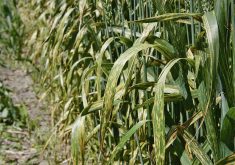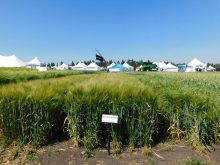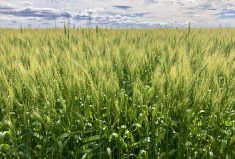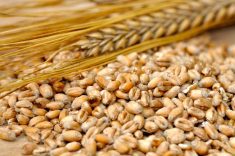There was less malt barley produced this year but what did come off looked good, according to the Canadian Grain Commission.
The organization’s 2017 Quality of Western Canadian Malting Barley report noted lower production, less acres, and a yield decrease, but high kernel weights and plumpness across the Prairies.
Alberta and northeastern B.C. (the two are grouped together) saw 2017 production drop by 11.5 per cent, slightly above the 10.2 per cent drop for Western Canada as a whole. But that decline is right in line with an 11.2 per cent drop in seeded acreage compared to 2016.
Read Also
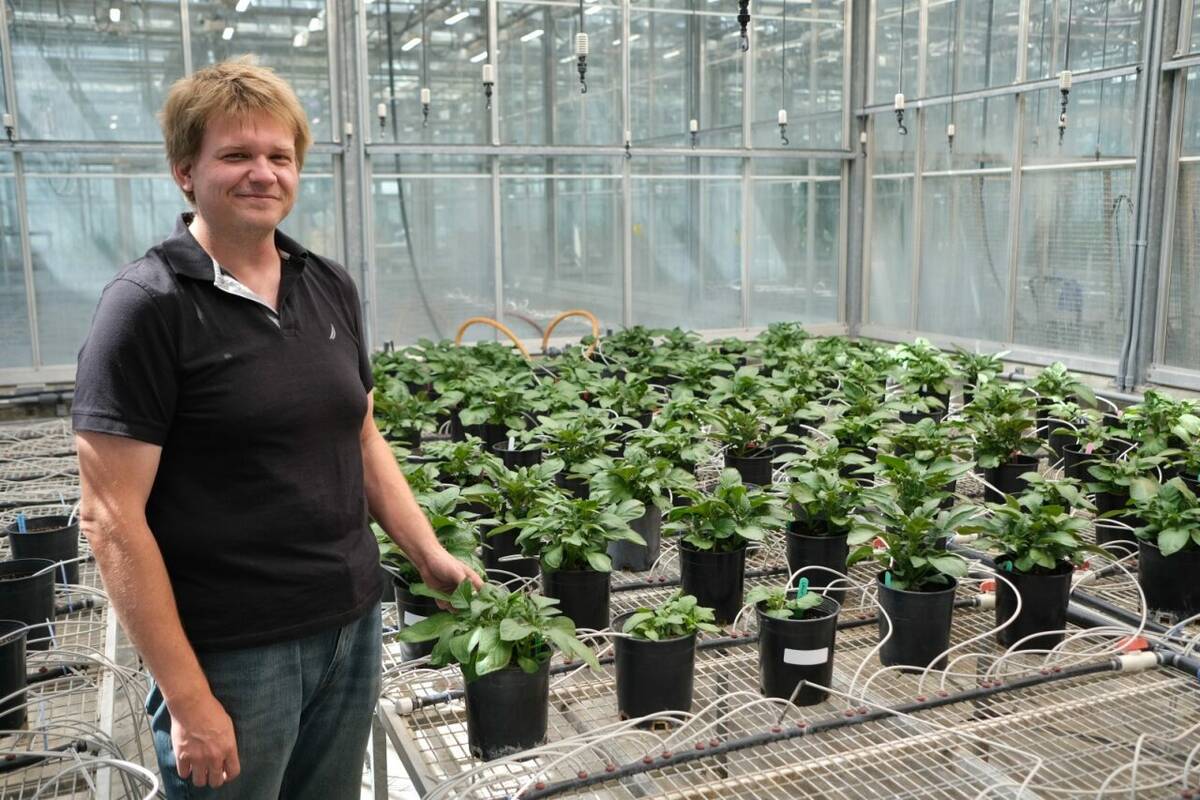
Hail research hopes to benefit potato growers
Alberta research scientist measures hail storm and heat dome affects on potato crops
Across Western Canada, the 5.4 million acres planted in 2017 were about 23 per cent less than the 10-year average and less than 2016 by about 600,000 acres. Yield hit only 69.8 bushels an acre in Western Canada, down from 73.9 bushels per acre in 2016.
CDC Copeland was the most popular variety grown in Alberta and northeastern B.C. — accounting for roughly a quarter of all acres, the report said, with AC Metcalfe and AAC Synergy in second and third spots.
Dry conditions were to blame for the lower yields, said the grain commission, with south-central Saskatchewan in particular hit with drought this summer, although subsoil moisture saved many of those yields, it said.
“Overall, the dry growing season in 2017 resulted in ample supply of excellent malt-quality barley with slightly lower-than-average protein levels, and heavier and plumper kernels compared with the 10-year average values,” the report states. “Barley exhibited very high germination energy and vigour with little evidence of water sensitivity.”



